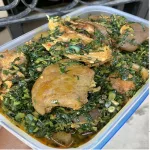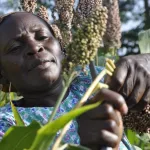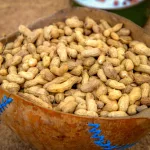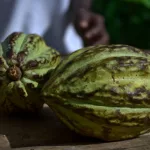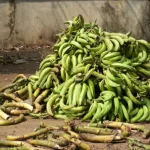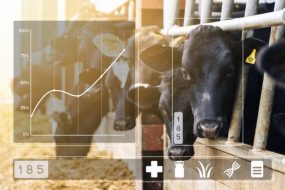Nigeria, often referred to as the “Giant of Africa,” is not only known for its vast cultural diversity but also its diverse agricultural resources. With a rich history of farming practices and a climate that supports a wide range of crops and livestock, Nigeria stands as a key player in the African agricultural landscape. In this article, we’ll take a deep dive into the 25 agricultural resources that can be found in different states across Nigeria, highlighting the nation’s agricultural potential and its significance to the economy.
READ, ALSO >>>>> What Are The Top 20 Innovative Agriculture Business Ideas You Need to Explore Today?
1. PALM OIL
Palm oil, derived from the fruit of the oil palm tree (Elaeis guineensis), holds a special place in Nigeria’s agriculture and economy. This versatile oil has a rich history in the country, and its production and consumption have evolved over the years. In this article, we’ll explore the pivotal role of palm oil in Nigeria, its historical significance, current status in agriculture, and its economic impact.

The Historical Significance of Palm Oil
Palm oil has a deep-rooted history in Nigeria, dating back to ancient times. The oil palm tree is believed to have originated in West Africa, and it was cultivated and utilized by indigenous communities for various purposes. The oil extracted from the palm fruit was not only used in cooking but also for medicinal and cosmetic purposes.
The importance of palm oil was further emphasized during the colonial era when the British colonialists recognized its commercial value. They established plantations in Nigeria, primarily in the southeastern and southwestern regions, to meet the growing demand for palm oil in Europe.
Palm Oil in Modern Nigerian Agriculture
Today, Nigeria is one of the world’s largest producers of palm oil, contributing significantly to the global palm oil market. The country’s palm oil industry has evolved to include both small-scale and large-scale production methods.

Small-Scale Palm Oil Production
Small-scale palm oil production remains a vital part of Nigeria’s agriculture. Millions of smallholder farmers cultivate oil palm trees on their lands, often using traditional methods passed down through generations. These small-scale operations play a crucial role in meeting domestic demand and providing livelihoods for rural communities.
Large-Scale Palm Oil Plantations
In addition to small-scale production, Nigeria has seen the growth of large-scale palm oil plantations. These modern plantations employ mechanized farming techniques and produce palm oil on a commercial scale. Companies operating in this sector contribute significantly to both domestic consumption and export.
Economic Impact of Palm Oil
Palm oil’s economic significance in Nigeria cannot be overstated. It is a major source of income for farmers, smallholders, and agribusinesses across the country. The palm oil sector contributes substantially to Nigeria’s Gross Domestic Product (GDP) and foreign exchange earnings.
Employment Generation
Palm oil cultivation and processing provide employment opportunities for millions of Nigerians, particularly in rural areas where alternative job prospects are limited. This helps alleviate poverty and supports rural development.
Export Revenue
Nigeria exports a significant portion of its palm oil production to international markets. The revenue generated from palm oil exports contributes to the country’s foreign exchange reserves.
Sustainable Practices and Challenges
While palm oil has brought economic benefits to Nigeria, it has also faced criticism for its environmental and social impact. Deforestation, habitat destruction, and conflicts over land rights are among the challenges associated with palm oil production in the country.
To address these concerns, there is a growing movement towards sustainable palm oil production in Nigeria. Sustainable practices aim to minimize the environmental footprint of palm oil production while promoting responsible land use and fair labor practices.
Palm oil has been a staple in Nigeria’s agriculture for centuries, and its importance has only grown over time. From traditional smallholder farmers to modern large-scale plantations, the palm oil industry plays a pivotal role in the country’s economy, providing income and employment opportunities for millions of Nigerians. As Nigeria continues to balance the economic benefits of palm oil with environmental and social considerations, sustainable practices are becoming increasingly important to ensure a prosperous and responsible palm oil industry in the future.
The main oil palm-producing states are Cross River, Akwa Ibom, Ekiti, Delta, Bayelsa, Ogun, Rivers, Anambra, Ondo, Enugu, Imo, Oyo, Abia, Edo, and Ogun.
2. RICE
Rice is more than just a staple food in Nigeria; it’s a cultural icon and a symbol of sustenance. Its significance in the country goes beyond mere sustenance, as rice plays a crucial role in the daily lives of millions of Nigerians. In this article, we will delve into the cultural importance of rice in Nigeria, its journey towards self-sufficiency, and the challenges faced in achieving this goal.
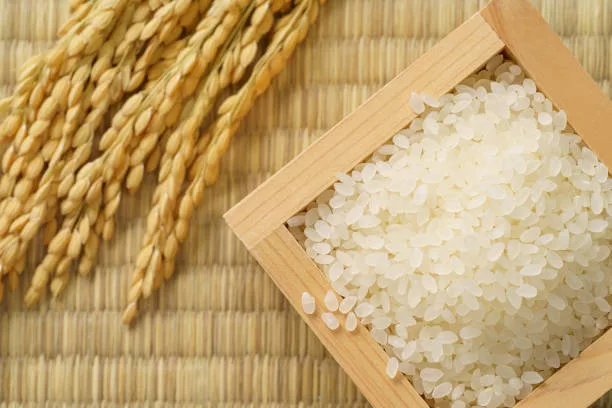
The Cultural Significance of Rice
Rice holds a special place in Nigerian culture and cuisine. It is an integral part of many traditional dishes and celebrations. From Jollof rice to fried rice, rice dishes are central to Nigerian cuisine, often served at weddings, festivals, and family gatherings. Rice symbolizes abundance, prosperity, and togetherness in Nigerian culture.
Nigeria’s Rice Revolution
Historically, Nigeria relied heavily on rice imports to meet its domestic demand. However, recognizing the economic and food security risks associated with this dependence, the country embarked on a journey toward self-sufficiency in rice production.
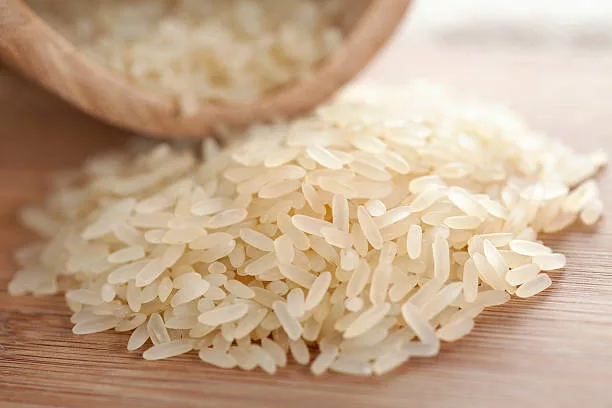
Government Initiatives
The Nigerian government introduced various policies and initiatives to boost domestic rice production. One of the most significant programs is the “Anchor Borrowers’ Program,” which provides financial support to small-scale rice farmers, ensuring they have access to resources needed for cultivation.
Technological Advancements
Advancements in rice farming technology have played a pivotal role in increasing production. Improved rice varieties, mechanized farming techniques, and better irrigation systems have all contributed to higher yields.
Increased Investment
Both public and private sectors have increased investments in rice production. This has led to the establishment of large-scale rice mills and processing plants, which are essential for adding value to the raw rice paddy.
Challenges in Achieving Self-Sufficiency
While Nigeria has made significant strides in rice production, several challenges persist:
Land and Water Resources
Sustainable land and water management is essential for rice cultivation. The competition for fertile land and water resources with other crops and industries poses a challenge.
Infrastructure
Inadequate transportation and storage facilities can lead to post-harvest losses, affecting overall production and profitability.
Climate Change
Rice is sensitive to climate conditions. Erratic rainfall patterns, floods, and droughts can impact crop yields, making climate change a growing concern for rice farmers.
Pests and Diseases
Rice crops are susceptible to various pests and diseases that can reduce yields if not properly managed.
The Road Ahead
Despite these challenges, Nigeria’s rice production has steadily increased, and the country has reduced its dependence on imports. Achieving self-sufficiency in rice remains a top priority, with the government and private sector continuing to invest in the sector.
Export Potential
With the growth of rice production, Nigeria also has the potential to become a rice-exporting nation, contributing to its economic growth.
Job Creation
The rice sector generates employment opportunities, particularly in rural areas where many small-scale farmers are involved in cultivation.
Rice is not just a grain in Nigeria; it’s a symbol of culture, sustenance, and progress. The journey towards self-sufficiency in rice production is a testament to Nigeria’s commitment to economic growth, food security, and cultural preservation. While challenges persist, the country’s efforts, investments, and advancements in technology have put it on the path to becoming a major player in the global rice market. The rice revolution in Nigeria is not just about food; it’s about empowerment, resilience, and the future.
The main areas of rice cultivation in the country include the states of Kebbi, Kano, Ebonyi, Anambra, Niger, and Taraba, Kebbi is the main rice-producing state in Nigeria.
3. COTTON
Cotton cultivation in Nigeria dates back to ancient times. Indigenous communities cultivated cotton for its fibers, which were woven into textiles and used for clothing. The traditional spinning and weaving of cotton cloth were integral to Nigerian culture and craftsmanship.
During the colonial era, cotton gained commercial importance, as the British colonialists recognized its value for the textile industry. Cotton plantations were established, and Nigeria became a significant cotton producer, exporting cotton fiber to textile mills around the world.

The Rise and Decline of Cotton Production
In the mid-20th century, Nigeria was a major player in the global cotton market. The crop thrived in various regions of the country, and cotton farms provided employment to many. However, over time, cotton production faced numerous challenges, leading to a decline in the industry.
Challenges Faced by Cotton Farmers
- Pest and Disease Pressure: Cotton crops in Nigeria have been susceptible to pests and diseases, leading to reduced yields and increased production costs.
- Lack of Mechanization: Many cotton farms in Nigeria still rely on manual labor, which can be inefficient and costly.
- Inadequate Funding: Limited access to credit and financing options has hindered investments in modernizing the cotton sector.
- Competition from Imported Fabrics: The influx of cheaper imported fabrics has negatively impacted the domestic textile industry, reducing demand for locally-produced cotton.
The Cotton Revival Efforts
Despite the challenges, there are ongoing efforts to revive cotton production in Nigeria:
Government Interventions
The Nigerian government has initiated various programs to support cotton farmers and revitalize the cotton industry. These programs include providing seeds, fertilizers, and improved farming practices to boost yields.
Partnerships and Investments
Public-private partnerships and investments in the cotton value chain have started to yield positive results. Companies are working with cotton farmers to improve cultivation techniques and provide market access.
Textile Industry Support
Efforts are being made to strengthen the textile industry in Nigeria, creating a demand for locally-grown cotton. This synergy between cotton producers and textile manufacturers can help revitalize the sector.
The Road Ahead
The future of cotton cultivation in Nigeria holds promise. As efforts to modernize the sector gain momentum, several positive outcomes are expected:
Economic Growth
Increased cotton production can contribute to economic growth by creating jobs, generating income for farmers, and reducing the country’s dependence on imported cotton.
Export Opportunities
Nigeria has the potential to become a cotton-exporting nation, supplying quality cotton fiber to the global market.
Sustainable Practices
Promoting sustainable cotton farming practices can reduce the environmental impact and ensure the long-term viability of the sector.
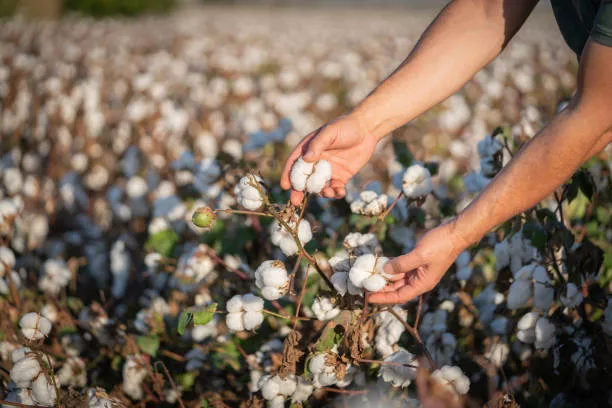
Cotton cultivation in Nigeria is more than just a crop; it represents a thread of economic potential and cultural heritage. While challenges have posed obstacles in the past, the determination to revive the cotton industry is evident. With continued support from the government, private sector, and international partnerships, Nigeria can weave a brighter future for its cotton industry, creating a tapestry of economic growth and prosperity for the nation.
The major producers of cotton are Kaduna, Ondo, Kano, Katsina, Oyo, Kwara, Ogun, Zamfara, Jigawa, Sokoto, and Kebbi.
4. GARLIC
Garlic, with its distinctive aroma and flavorful taste, is not just a kitchen staple but also a vital crop in Nigeria. Beyond its culinary uses, garlic offers numerous health benefits and economic opportunities for farmers. In this article, we’ll delve into the world of garlic farming in Nigeria, exploring its cultivation, significance in local cuisine, health advantages, and its potential for agricultural growth.
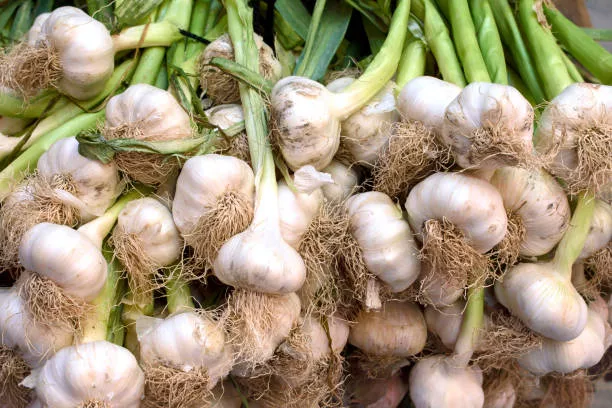
The Art of Garlic Cultivation
Soil and Climate
Garlic thrives in well-drained, fertile soil with good moisture retention. Nigeria’s diverse climate zones provide suitable conditions for garlic cultivation, making it adaptable to various regions across the country.
Planting and Harvesting
Garlic is typically propagated by planting individual cloves. Farmers plant garlic cloves during the rainy season, and the crop is ready for harvest when the leaves begin to wither and turn yellow. Harvested garlic bulbs are cured in the sun to enhance their flavor and shelf life.
Varieties
Several garlic varieties are grown in Nigeria, with the most common being the softneck and hardneck varieties. The choice of variety depends on local climate conditions and market demand.
Garlic in Local Cuisine
Garlic holds a cherished place in Nigerian cuisine. It is used to add flavor and depth to a wide range of dishes, including soups, stews, and sauces. Some popular Nigerian dishes like jollof rice and pepper soup rely on garlic for their distinct taste.
Beyond its culinary role, garlic is believed to have medicinal properties in traditional Nigerian medicine. It is used to treat various ailments and is considered a natural remedy for common health issues.

Health Benefits of Garlic
Garlic is celebrated for its potential health benefits. It contains allicin, a compound known for its antimicrobial and antioxidant properties. Some of the health advantages of garlic include:
- Heart Health: Garlic may help lower blood pressure and reduce the risk of heart disease.
- Immune Support: Garlic is known for its immune-boosting properties, helping the body fight infections.
- Antioxidant Power: The antioxidants in garlic may protect cells from damage and reduce the risk of chronic diseases.
- Anti-Inflammatory: Garlic may help reduce inflammation in the body, potentially benefiting those with inflammatory conditions.
Economic Potential
Garlic farming has the potential to contribute significantly to Nigeria’s agricultural economy. Here are some key aspects:
Market Demand
The demand for garlic in Nigeria is steadily growing, driven by its culinary and health benefits. This creates a profitable market for garlic farmers.
Export Opportunities
Nigerian-grown garlic also has the potential for international export, providing an additional revenue stream for the country.
Job Creation
Garlic farming can generate employment opportunities in rural areas, supporting livelihoods and economic development.
Challenges and the Way Forward
While garlic farming has great potential, it faces challenges such as pest infestations, disease outbreaks, and inadequate post-harvest handling facilities. To unlock the full potential of garlic cultivation in Nigeria, there is a need for:
- Research and Development: Invest in research to develop garlic varieties adapted to local conditions and resistant to common pests and diseases.
- Training and Education: Provide farmers with training on modern cultivation techniques and post-harvest handling to reduce losses and improve yields.
- Infrastructure: Develop infrastructure for proper storage and transportation to ensure garlic quality and reduce post-harvest losses.
Garlic farming in Nigeria is not just about flavoring food; it’s about nurturing health, creating economic opportunities, and celebrating a crop deeply intertwined with the nation’s culinary traditions. As the demand for garlic continues to rise, Nigeria has the potential to cultivate this pungent powerhouse into a flourishing agricultural sector, benefiting both farmers and consumers alike. Garlic, with its rich history and promising future, remains a symbol of growth and flavor in the heart of Nigeria.
States that are the main producers of the commodity are Kano, Kaduna, Kebbi, Sokoto, Jigawa, Bauchi, Katsina and Zamfara.
5. GINGER
Ginger, with its distinctive flavor and versatile uses, is a prized crop in Nigeria. It not only adds zest to local cuisine but also contributes to the country’s economy through exports and agricultural development. In this article, we’ll delve into the realm of ginger farming in Nigeria, exploring its cultivation practices, significance in local cuisine, health benefits, and its potential as an economic powerhouse.
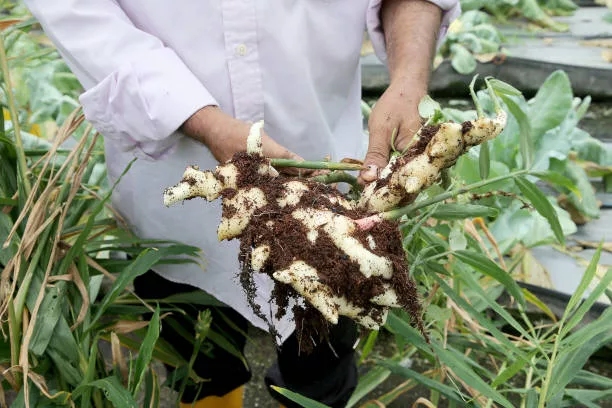
The Art of Ginger Cultivation
Soil and Climate
Ginger thrives in well-drained, fertile soil with good organic matter content. Nigeria’s diverse climate zones provide suitable conditions for ginger cultivation, making it adaptable to various regions across the country.
Planting and Harvesting
Ginger is propagated by planting rhizomes, which are ginger’s underground stems. Farmers plant ginger rhizomes during the rainy season, and the crop is ready for harvest when the leaves start turning yellow. Harvested ginger is washed, dried, and processed before being sold.
Varieties
Nigeria cultivates various ginger varieties, with the most common being the yellow and white ginger types. The choice of ginger variety often depends on local climate conditions and market preferences.
Ginger in Local Cuisine
Ginger is a cherished ingredient in Nigerian cuisine. It imparts a distinct flavor and aroma to a wide range of dishes, including soups, stews, and sauces. Some popular Nigerian dishes, like pepper soup and ginger juice, heavily rely on ginger for their unique taste.
Beyond its culinary role, ginger is valued in traditional Nigerian medicine. It is used to treat digestive issues, reduce inflammation, and alleviate nausea, making it a go-to remedy for various ailments.

Health Benefits of Ginger
Ginger is renowned for its potential health benefits, thanks to its active compound, gingerol. Some of the health advantages of ginger include:
- Digestive Aid: Ginger can help alleviate digestive discomfort, including indigestion and nausea.
- Anti-Inflammatory: Ginger possesses anti-inflammatory properties that may help reduce inflammation in the body.
- Pain Relief: It is often used to relieve muscle and joint pain, making it a natural remedy for pain management.
- Immune Booster: Ginger’s immune-boosting properties can help the body fend off infections.
Economic Potential
Ginger farming presents significant economic opportunities in Nigeria:
Export Demand
Nigeria’s ginger is in high demand in international markets, particularly in Europe and Asia. This provides an avenue for export and foreign exchange earnings.
Job Creation
Ginger farming can generate employment opportunities, particularly in rural areas where many smallholder farmers are involved in cultivation.
Income Diversification
For farmers, ginger can serve as a valuable cash crop, diversifying income sources and reducing reliance on a single crop.
Challenges and the Way Forward
While ginger farming holds immense promise, it faces challenges such as pest infestations, disease outbreaks, and post-harvest losses. To fully unlock the potential of ginger cultivation in Nigeria, there is a need for:
- Research and Development: Invest in research to develop ginger varieties adapted to local conditions and resistant to common pests and diseases.
- Training and Education: Provide farmers with training on modern cultivation techniques and post-harvest handling to reduce losses and improve yields.
- Infrastructure: Develop infrastructure for proper storage and transportation to ensure ginger quality and reduce post-harvest losses.
Ginger farming in Nigeria is not just about spicing up dishes; it’s about enhancing health, creating economic opportunities, and celebrating a crop deeply ingrained in the nation’s culinary and medicinal traditions. As the demand for ginger continues to grow locally and globally, Nigeria has the potential to cultivate this zesty wonder into a thriving agricultural sector, benefiting both farmers and consumers alike. Ginger, with its rich history and promising future, remains a symbol of flavor and growth in the heart of Nigeria.
Kaduna State stands as the highest producer of the crop while states like Gombe, Bauchi, Benue, and Nassarawa are major producers.
6. GUM ARABIC
Gum Arabic, often referred to as the “golden resin,” is a valuable natural resource with a rich history in Nigeria. This versatile substance has diverse applications, from the food industry to pharmaceuticals and cosmetics. In this article, we will explore the world of gum Arabic production in Nigeria, its ecological significance, economic potential, and the methods involved in harvesting and processing this precious natural treasure.

The Ecological Significance of Gum Arabic
Gum Arabic is sourced from the Acacia Senegal and Acacia seyal trees, which are native to various regions of Nigeria. These trees play a crucial ecological role:
- Soil Stabilization: Acacia trees help prevent soil erosion in arid and semi-arid regions, contributing to soil conservation.
- Biodiversity: They provide habitat and sustenance for various wildlife species, including birds and insects.
- Ecosystem Services: Acacia trees contribute to local ecosystems by improving soil fertility and providing shade.
Gum Arabic Production in Nigeria
Harvesting
Gum Arabic is harvested from the bark of Acacia trees. The process typically involves making cuts or incisions in the bark, allowing the gum to ooze out. This gum is collected and left to harden into translucent tears or nodules.
Processing
Once harvested, gum Arabic undergoes a series of cleaning and sorting processes. Impurities are removed, and the gum is graded based on color, size, and quality. It is then packaged for sale.
Economic Potential
Gum Arabic has significant economic potential in Nigeria:
- Export Revenue: Nigeria is one of the world’s largest producers of gum Arabic, and it exports this natural resin to international markets, contributing to foreign exchange earnings.
- Rural Livelihoods: Gum Arabic production provides income opportunities for rural communities, particularly in the northern regions where Acacia trees are abundant.
- Diverse Applications: Gum Arabic is used in various industries, including food and beverages, pharmaceuticals, cosmetics, and textiles, making it a valuable commodity.
Challenges and Sustainability
While gum Arabic production offers economic benefits, it also faces challenges:
- Overharvesting: Unsustainable harvesting practices can damage Acacia trees and disrupt local ecosystems. Sustainable harvesting methods must be promoted.
- Market Fluctuations: Gum Arabic prices can be volatile due to fluctuations in global demand. Diversifying product uses and markets can help stabilize the industry.
- Climate Change: Climate change poses a threat to Acacia tree populations. Conservation efforts and reforestation projects are essential for long-term sustainability.
Gum Arabic production in Nigeria is not just an economic endeavor; it’s a harmonious relationship between people and nature. As Nigeria continues to be a major player in the global gum Arabic market, sustainable practices, and ecological conservation efforts become paramount. Gum Arabic, the “golden resin” of Nigeria, represents not only economic potential but also a commitment to preserving the country’s natural heritage for future generations.
States are the major producers in Nigeria are Adamawa, Bauchi, Borno, Yobe, Jigawa, Gombe, Taraba, Plateau, Sokoto, Kebbi, Katsina, Nasarawa, Niger and Zamfara. Though Borno and Yobe
7. HIBISCUS
Hibiscus, known for its stunning blossoms and versatile uses, is a vibrant crop in Nigeria. Beyond its ornamental beauty, hibiscus has economic potential in the global market, particularly in the food and beverage industry. In this article, we’ll immerse ourselves in the world of hibiscus farming in Nigeria, exploring its cultivation practices, significance, economic opportunities, and the methods involved in growing, harvesting, and processing this versatile crop.

The Beauty and Significance of Hibiscus
Hibiscus, with its large, colorful flowers, is not only a visual delight but also holds cultural and culinary significance in Nigeria. The vibrant blooms are often used in traditional ceremonies, and hibiscus tea, known locally as “Zobo,” is a popular beverage enjoyed across the country.
Hibiscus Cultivation in Nigeria
Cultivation Methods
Hibiscus thrives in Nigeria’s tropical climate. The cultivation of hibiscus typically involves the following steps:
- Land Preparation: Well-drained soil with good organic matter content is ideal for hibiscus cultivation. Farmers prepare the land by plowing and adding organic matter.
- Sowing: Hibiscus seeds are sown directly in the field. Proper spacing between plants is essential to ensure healthy growth.
- Irrigation: An adequate water supply is crucial, especially during the dry season when rainfall is scarce.
- Pest Control: Hibiscus plants can be susceptible to pests and diseases. Organic or chemical methods are employed to protect the crop.
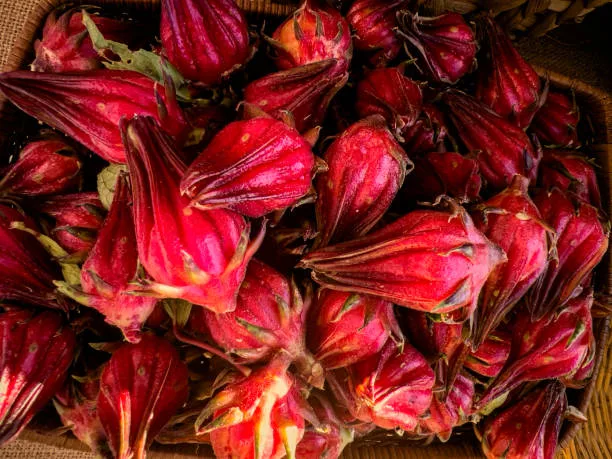
Harvesting and Processing
Hibiscus flowers are harvested when they reach full bloom. The petals are carefully plucked, and the calyx (the base of the flower) is separated. The calyces are then dried in the sun to reduce moisture content.
Economic Potential
Hibiscus farming presents significant economic opportunities in Nigeria:
- Export Demand: Nigeria is a major exporter of dried hibiscus flowers to international markets, particularly in Europe and Asia. This provides an avenue for export earnings and foreign exchange.
- Local Processing: Hibiscus flowers are used in the production of popular local beverages, contributing to the country’s beverage industry.
- Job Creation: Hibiscus farming generates employment opportunities, particularly in rural areas where many smallholder farmers are involved in cultivation.
Challenges and Sustainability
While hibiscus farming offers economic benefits, it also faces challenges:
- Quality Control: Ensuring consistent quality of dried hibiscus flowers is essential for international market access. Proper drying and storage techniques are crucial.
- Market Fluctuations: Hibiscus prices can vary due to fluctuations in global demand. Diversifying product uses and markets can help stabilize the industry.
- Climate Sensitivity: Climate change can impact hibiscus cultivation, affecting crop yields and quality. Adaptation strategies are necessary for long-term sustainability.
Hibiscus farming in Nigeria is not just about vibrant blossoms; it’s about flavor, culture, and economic opportunity. As the demand for hibiscus continues to rise both locally and globally, Nigeria has the potential to cultivate this versatile crop into a thriving agricultural sector, benefiting both farmers and consumers alike. Hibiscus, with its stunning petals and economic promise, remains a symbol of growth and color in the heart of Nigeria.
The main areas of production in Nigeria are Jigawa, Kano, and Bauchi states. Also produced in Sokoto, Zamfara, Katsina, and Borno states.
8. GROUNDNUT
Groundnut, also known as peanut, is a versatile and nutritious crop that plays a significant role in Nigeria’s agriculture and diet. These nutty legumes are a source of essential nutrients and provide livelihoods for many Nigerian farmers. In this article, we’ll delve into the world of groundnut farming in Nigeria, exploring its cultivation practices, nutritional significance, economic opportunities, and the methods involved in growing, harvesting, and processing this versatile crop.
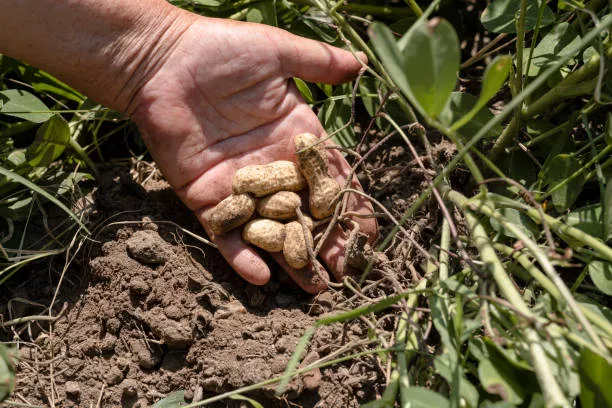
The Nutritional Value of Groundnut
Groundnuts are a rich source of nutrients, making them a valuable addition to the Nigerian diet. They are a good source of protein, healthy fats, vitamins, and minerals. Groundnut products, such as peanut butter and groundnut oil, are popular for their flavor and nutritional content.
Groundnut Cultivation in Nigeria
Cultivation Methods
Groundnut thrives in Nigeria’s diverse agroecological zones. The cultivation of groundnuts typically involves the following steps:
- Land Preparation: Well-drained sandy or loamy soil is ideal for groundnut cultivation. Farmers prepare the land by plowing and adding organic matter.
- Sowing: Groundnut seeds are sown directly in the field. Proper spacing between plants is essential to ensure healthy growth.
- Irrigation: Groundnuts require adequate water supply, particularly during the flowering and pod development stages.
- Pest Control: Groundnut plants can be susceptible to pests and diseases, necessitating pest management practices to protect the crop.
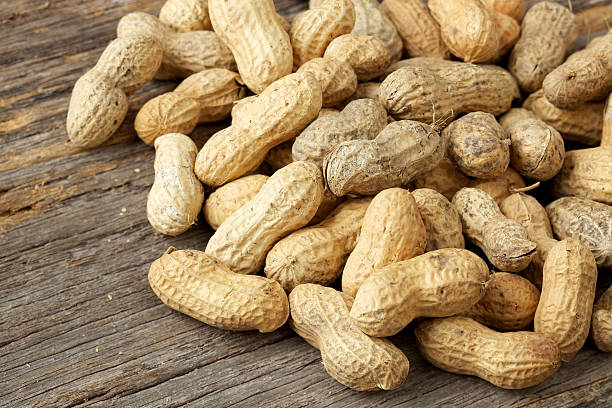
Harvesting and Processing
Groundnuts are typically ready for harvest when the plants begin to yellow and dry. Harvesting involves uprooting the entire plant and shaking off the soil. After harvesting, the groundnuts are left to dry in the sun. Once dried, the nuts are removed from the pods.
Groundnuts can be consumed as snacks or processed into various products like peanut butter, groundnut oil, and roasted nuts.
Economic Potential
Groundnut farming presents significant economic opportunities in Nigeria:
- Export Demand: Nigeria exports groundnuts to international markets, contributing to foreign exchange earnings.
- Local Processing: Groundnuts are used in the production of popular local snacks and cooking oil, supporting the country’s food industry.
- Job Creation: Groundnut farming generates employment opportunities, particularly in rural areas where many smallholder farmers are involved in cultivation.
Challenges and Sustainability
While groundnut farming offers economic benefits, it also faces challenges:
- Disease and Pest Management: Proper management of pests and diseases is essential to prevent crop loss.
- Quality Control: Ensuring consistent quality of groundnut products is crucial for both local consumption and export.
- Climate Sensitivity: Climate change can affect groundnut yields, making adaptation strategies necessary for long-term sustainability.
Groundnut farming in Nigeria is not just about nutritious nuts; it’s about flavor, nutrition, and economic opportunity. As the demand for groundnuts continues to grow both locally and globally, Nigeria has the potential to cultivate this versatile crop into a thriving agricultural sector, benefiting both farmers and consumers alike. Groundnut, with its nutritional richness and economic promise, remains a symbol of growth and sustenance in the heart of Nigeria.
States that are the major producers of the commodity are Niger, Kano, Jigawa, Zamfara, Kebbi, Sokoto, Katsina, Kaduna, Adamawa, Yobe, Borno, Taraba, Plateau, Nasarawa, Bauchi, and Gombe
9. YAM
Yam, often referred to as the “king of crops” in Nigeria, holds a special place in the country’s culture, cuisine, and economy. It is not just a staple food but also a symbol of prosperity and tradition. In this article, we’ll journey into the world of yam cultivation in Nigeria, exploring its cultural significance, role in food security, economic importance, and the methods involved in growing, harvesting, and preserving this vital crop.

The Cultural Significance of Yam
Yam occupies a central role in Nigerian culture and traditions. It is often associated with festivals and ceremonies, including the “New Yam Festival,” which marks the beginning of the yam harvest season. Yams are given as gifts, and offerings to deities, and are used to celebrate important life events. They symbolize fertility, abundance, and wealth in Nigerian society.
Yam Cultivation in Nigeria
Cultivation Methods
Yam is a tropical crop that thrives in Nigeria’s diverse agro-ecological zones. The cultivation of yam typically involves the following steps:
- Land Preparation: Well-drained, fertile soil is essential for yam cultivation. Farmers prepare the land by plowing and ridging.
- Planting: Yam is propagated through small tubers or “setts.” These setts are planted in mounds or ridges and covered with soil.
- Supports: Some yam varieties require supports to climb, and stakes or trellises are used to provide structural support to the growing vines.
- Weeding and Pest Control: Regular weeding and pest management practices are employed to ensure healthy yam growth.
Harvesting and Preservation
Yams are typically ready for harvest when the leaves turn yellow and begin to wither. Harvesting involves carefully digging up the tubers from the ground. Yam tubers are then stored in cool, dry places to preserve them for an extended period.
Food Security and Economic Importance
Yam is a critical component of Nigeria’s food security and economy:
- Food Security: Yam is a staple food in Nigeria, providing a significant portion of the population’s dietary needs. It is a reliable source of carbohydrates and essential nutrients.
- Economic Contribution: Yam farming generates income for millions of Nigerian farmers, particularly in rural areas. It is also an essential commodity in the country’s agricultural exports.
- Employment: Yam cultivation and its value chain provide employment opportunities for various stakeholders, including farmers, transporters, and traders.
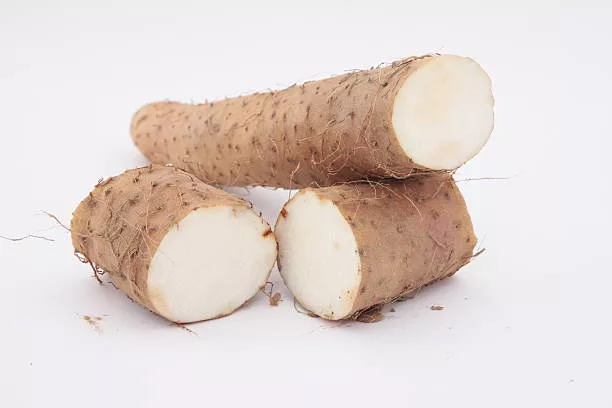
Challenges and Sustainability
While yam cultivation is deeply rooted in Nigerian culture and economy, it faces challenges:
- Pests and Diseases: Yam crops are susceptible to pests and diseases, which can lead to reduced yields.
- Storage and Post-Harvest Losses: Proper storage facilities and preservation techniques are essential to prevent post-harvest losses.
- Climate Change: Changing weather patterns can affect yam production, necessitating adaptation strategies.
Yam cultivation in Nigeria is not just about sustenance; it’s about culture, tradition, and economic vitality. As Nigeria continues to balance the preservation of cultural heritage with the need for food security and economic growth, yam remains a symbol of resilience and prosperity in the heart of the nation. Yam, deeply rooted in tradition and growing for the future, embodies the strength and sustenance of Nigeria’s agricultural heritage.
The major yam-producing states in Nigeria are Taraba, Benue, Niger and Nassarawa. Benue state is however the largest producer.
10. CASSAVA
Cassava, often called the “staff of life,” is a resilient and vital crop in Nigeria. It serves as a source of food security, livelihoods for millions of farmers, and economic opportunities. In this article, we’ll explore the world of cassava cultivation in Nigeria, delving into its importance in food security, economic significance, and the methods involved in growing, harvesting, and processing this versatile crop.
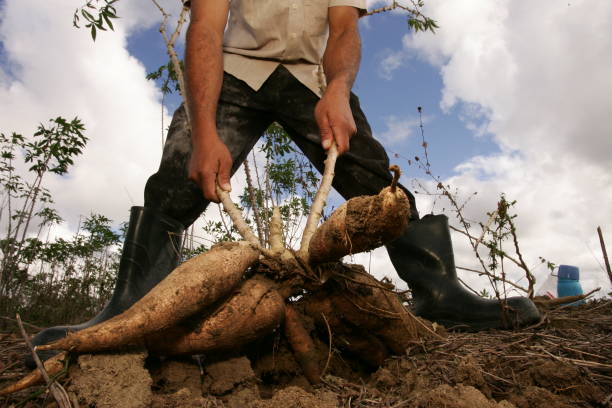
Cassava and Food Security
Nutritional Value
Cassava is rich in carbohydrates and a source of energy, making it a crucial staple in the Nigerian diet. It provides essential nutrients, including dietary fiber, vitamins, and minerals, making it a valuable food source for many Nigerians.
Drought Tolerance
Cassava’s ability to thrive in drought-prone regions is of significant importance. It can withstand adverse weather conditions, making it a reliable source of food, especially in regions with erratic rainfall.
Cassava Cultivation in Nigeria
Cultivation Methods
Cassava cultivation in Nigeria involves the following steps:
- Land Preparation: Farmers prepare the land by clearing and plowing. Cassava can grow in a variety of soil types, but well-drained, sandy loam soils are ideal.
- Planting: Cassava is propagated using stem cuttings. These cuttings are planted in ridges or rows and spaced appropriately.
- Weeding and Pest Control: Regular weeding and pest management practices are essential to ensure healthy cassava growth.
- Harvesting: Cassava is typically ready for harvest 9-12 months after planting. The tubers are carefully dug up from the ground.
Processing
Cassava can be processed into various products, including garri, fufu, tapioca, and flour. Processing involves peeling, washing, grating, and drying the cassava tubers.
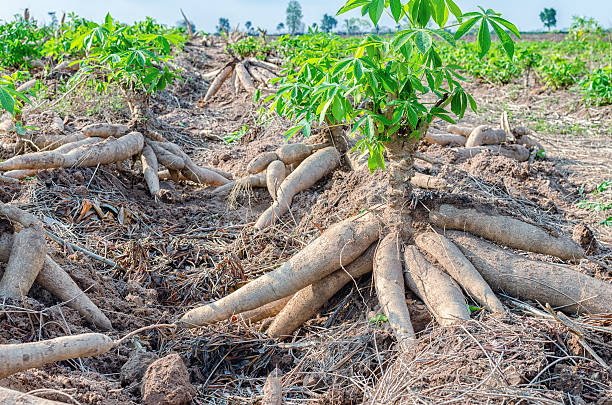
Economic Significance
Cassava farming plays a significant role in Nigeria’s economy:
- Income Generation: Cassava farming provides livelihoods for millions of Nigerian farmers, particularly in rural areas.
- Export Potential: Nigeria exports cassava products to international markets, contributing to foreign exchange earnings.
- Value Addition: The cassava value chain includes processing and marketing, creating opportunities for employment and income generation.
Challenges and Sustainability
Cassava cultivation faces several challenges:
- Pests and Diseases: Cassava crops are susceptible to pests and diseases, which can lead to reduced yields.
- Storage and Post-Harvest Losses: Proper storage facilities and preservation techniques are essential to prevent post-harvest losses.
- Low Processing Capacity: Investments in modern processing facilities are needed to add value to cassava products.

Cassava cultivation in Nigeria is not just about food; it’s about resilience, security, and prosperity. As Nigeria continues to address the challenges and harness the economic potential of cassava, this versatile crop remains a symbol of strength and sustenance in the heart of the nation. Cassava, deeply rooted in Nigeria’s agricultural landscape, is a testament to the country’s determination to achieve food security and economic growth.
The main producing states are Imo, Ondo, Anambra, Kogi, Taraba, Cross River, Enugu, Ogun, Benue, Delta, and Edo.
11. CASHEW
Cashew, often referred to as the “wonder nut,” is a valuable crop in Nigeria. It not only contributes to the country’s economy but also provides employment opportunities and supports agribusiness ventures. In this article, we will dive into the world of cashew cultivation in Nigeria, exploring its economic significance, role in agribusiness, and the methods involved in growing, harvesting, and processing this valuable nut.
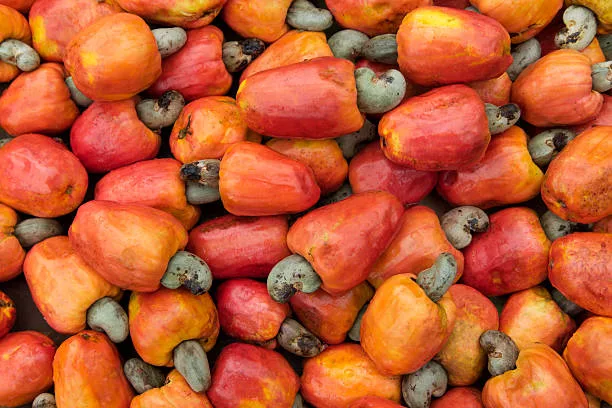
The Economic Significance of Cashew
Export Earnings
Cashew is one of Nigeria’s top non-oil export commodities. It contributes significantly to the country’s foreign exchange earnings, with Nigerian cashew nuts in demand in international markets, particularly in Asia and Europe.
Job Creation
Cashew farming provides employment opportunities, especially in rural areas where many smallholder farmers are involved in cultivation and processing. It supports livelihoods and reduces unemployment.
Agribusiness Ventures
Cashew serves as a foundation for agribusiness ventures, including cashew processing, packaging, and marketing. These value-added activities contribute to the growth of the agricultural sector.
Cashew Cultivation in Nigeria
Cultivation Methods
Cashew cultivation in Nigeria typically involves the following steps:
- Land Preparation: Well-drained sandy loam soils are ideal for cashew cultivation. Farmers prepare the land by clearing and plowing.
- Planting: Cashew trees are propagated using seeds or grafting. Seedlings are planted in rows, and adequate spacing is crucial for healthy tree growth.
- Pruning and Maintenance: Regular pruning and maintenance activities are essential to ensure the health and productivity of cashew trees.
- Harvesting: Cashew nuts are ready for harvest when the apples (cashew fruits) change color and the nuts inside mature. Harvesting involves carefully removing the nuts from the apples.
Processing
Cashew nuts undergo processing to remove the outer shell and obtain the edible kernels. The processing stages include roasting, shelling, and grading. Processed cashew kernels are then packaged for sale.

Challenges and Sustainability
While cashew cultivation offers economic benefits, it also faces challenges:
- Quality Control: Ensuring consistent quality of cashew nuts is crucial for international market access.
- Pest and Disease Management: Cashew trees can be susceptible to pests and diseases, which can impact yields.
- Infrastructure: Investments in processing facilities and infrastructure are needed to add value to cashew products.
Cashew cultivation in Nigeria is not just about nuts; it’s about prosperity, growth, and agribusiness opportunities. As Nigeria continues to harness the economic potential of cashews, this valuable crop remains a symbol of the country’s commitment to diversify its economy and support rural development. Cashew, deeply rooted in Nigeria’s agricultural landscape, is a testament to the nation’s journey towards sustainable agribusiness and economic growth.
The main producing states are Enugu, Oyo, Anambra, Kogi, Osun, Abia, Ondo, Benue, Cross River, Imo, Ekiti, Ebonyi, Kwara and Nassarawa.
12. MAIZE
Maize, also known as corn, is a staple crop in Nigeria that plays a crucial role in food security and economic development. It serves as a source of sustenance for millions of Nigerians and contributes to the country’s economy through various value chains. In this article, we’ll explore the world of maize cultivation in Nigeria, delving into its importance in food security, economic significance, and the methods involved in growing, harvesting, and processing this versatile grain.

Maize and Food Security
Dietary Staple
Maize is a dietary staple in Nigeria, providing essential carbohydrates and nutrients to the population. It is a primary ingredient in various traditional dishes, including “tuwo” and “pap.”
Diverse Uses
Maize is not only consumed directly but is also used as animal feed and serves as a raw material in the production of processed foods, such as maize flour and maize-based snacks.
Maize Cultivation in Nigeria
Cultivation Methods
Maize cultivation in Nigeria typically involves the following steps:
- Land Preparation: Well-drained soils with good organic matter content are ideal for maize cultivation. Farmers prepare the land by plowing and ridging.
- Planting: Maize is propagated through seeds, which are sown directly in the field. Adequate spacing between rows and plants is crucial for optimal growth.
- Weeding and Pest Control: Regular weeding and pest management practices are essential to ensure healthy maize growth.
- Harvesting: Maize is typically ready for harvest when the cobs have reached their full size, and the kernels are mature. Harvesting involves picking the cobs from the maize plants.
Processing
Maize kernels can be processed into various products, including maize flour, maize meal, and maize grits. The processing stages involve cleaning, milling, and packaging the maize products.
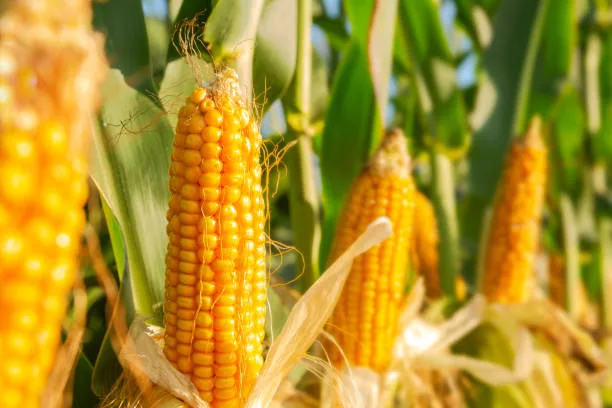
Economic Significance
Maize farming plays a significant role in Nigeria’s economy:
- Income Generation: Maize farming provides income opportunities for millions of Nigerian farmers, particularly in rural areas.
- Animal Husbandry: Maize serves as a critical component of animal feed, supporting the livestock industry.
- Value Addition: The maize value chain includes processing and marketing, creating opportunities for employment and income generation.
Challenges and Sustainability
While maize cultivation offers economic benefits, it also faces challenges:
- Pests and Diseases: Maize crops are susceptible to pests and diseases, which can lead to reduced yields.
- Climate Sensitivity: Changing weather patterns can affect maize production, necessitating adaptation strategies.
- Post-Harvest Losses: Proper storage facilities and preservation techniques are essential to prevent post-harvest losses.
Maize cultivation in Nigeria is not just about grains; it’s about prosperity, nutrition, and food security. As Nigeria continues to address the challenges and harness the economic potential of maize, this versatile grain remains a symbol of resilience and sustenance in the heart of the nation. Maize, deeply ingrained in Nigeria’s agricultural heritage, embodies the country’s commitment to achieving food security and economic growth.
The Central states of Nigeria such as Niger, Kaduna, Taraba, Plateau, and Adamawa are the major producers.
13. COWPEA
The cowpea, often called the “black-eyed pea,” is a resilient and nutritious legume that holds a special place in Nigeria’s agriculture and diet. It is a source of vital nutrition and contributes to the country’s economy through farming and trade. In this article, we’ll dive into the world of cowpea cultivation in Nigeria, exploring its importance in nutrition, economic significance, and the methods involved in growing, harvesting, and processing this versatile legume.
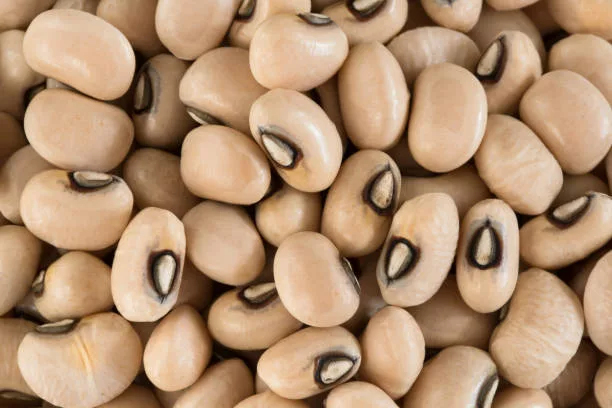
Cowpea and Nutrition
Dietary Protein
Cowpea is a valuable source of plant-based protein, making it an essential component of the Nigerian diet, particularly for individuals who rely on vegetarian or vegan nutrition.
Nutrient Rich
Cowpea is rich in essential nutrients, including vitamins, minerals, and dietary fiber, making it a wholesome addition to meals.
Cowpea Cultivation in Nigeria
Cultivation Methods
Cowpea cultivation in Nigeria typically involves the following steps:
- Land Preparation: Well-drained, sandy loam soils are ideal for cowpea cultivation. Farmers prepare the land by plowing and ridging.
- Planting: Cowpea is propagated through seeds, which are sown directly in the field. Proper spacing between rows and plants is crucial for healthy growth.
- Weeding and Pest Control: Regular weeding and pest management practices are essential to ensure optimal cowpea growth.
- Harvesting: Cowpea pods are typically ready for harvest when they have reached full size, and the seeds inside have matured. Harvesting involves picking the pods from the cowpea plants.
Processing
Cowpea seeds can be processed into various products, including cowpea flour, cowpea paste, and canned cowpea products. Processing involves cleaning, milling, and packaging the cowpea products.
Economic Significance
Cowpea farming plays a significant role in Nigeria’s economy:
- Income Generation: Cowpea farming provides income opportunities for millions of Nigerian farmers, particularly in rural areas.
- Market Opportunities: Cowpea is in demand in local and international markets, contributing to trade and economic growth.
- Food Security: Cowpea serves as a source of affordable nutrition, promoting food security, particularly during times of crop scarcity.
Challenges and Sustainability
While cowpea cultivation offers economic benefits, it also faces challenges:
- Pests and Diseases: Cowpea crops are susceptible to pests and diseases, which can lead to reduced yields.
- Climate Sensitivity: Changing weather patterns can affect cowpea production, necessitating adaptation strategies.
- Post-Harvest Losses: Proper storage facilities and preservation techniques are essential to prevent post-harvest losses.
Cowpea cultivation in Nigeria is not just about legumes; it’s about nourishment, prosperity, and food security. As Nigeria continues to address the challenges and harness the economic potential of cowpeas, this resilient legume remains a symbol of resilience and sustenance in the heart of the nation. Cowpea, deeply rooted in Nigeria’s agricultural heritage, embodies the country’s commitment to achieving nutritional well-being and economic growth.
The major growing/production areas in Nigeria are: Borno, Zamfara, Sokoto, Kano, Gombe and Yobe
14. SOYBEAN
Soybean, often hailed as the “miracle crop,” is a versatile and nutritious legume that is gaining prominence in Nigeria. It serves as a source of essential nutrition and contributes significantly to the country’s economy through farming and processing. In this article, we’ll delve into the world of soybean cultivation in Nigeria, exploring its nutritional importance, economic significance, and the methods involved in growing, harvesting, and processing this versatile legume.

Nutritional Value of Soybean
Protein Powerhouse
Soybean is renowned for its high protein content, making it a valuable source of plant-based protein for both humans and livestock.
Rich in Nutrients
Soybean is rich in essential nutrients, including vitamins, minerals, and dietary fiber, making it a well-rounded addition to diets.
Soybean Cultivation in Nigeria
Cultivation Methods
Soybean cultivation in Nigeria typically involves the following steps:
- Land Preparation: Well-drained, loamy soils are ideal for soybean cultivation. Farmers prepare the land by plowing and ridging.
- Planting: Soybean is propagated through seeds, which are sown directly in the field. Proper spacing between rows and plants is crucial for healthy growth.
- Weeding and Pest Control: Regular weeding and pest management practices are essential to ensure optimal soybean growth.
- Harvesting: Soybean pods are typically ready for harvest when they have reached full size, and the seeds inside have matured. Harvesting involves picking the pods from the soybean plants.
Processing
Soybean seeds can be processed into various products, including soybean meal, soybean oil, and tofu. Processing involves cleaning, crushing, and extracting the soybean products.
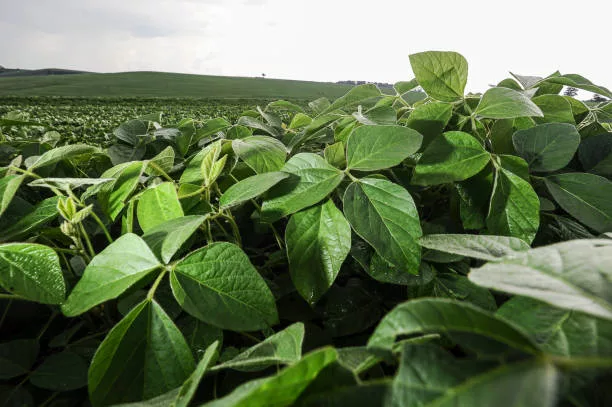
Economic Significance
Soybean farming plays a significant role in Nigeria’s economy:
- Income Generation: Soybean farming provides income opportunities for Nigerian farmers, particularly in rural areas.
- Livestock Feed: Soybean meal is a critical component of animal feed, supporting the livestock industry.
- Edible Oil Production: Soybean oil is widely used in cooking and food processing, contributing to the food industry.
Challenges and Sustainability
While soybean cultivation offers economic benefits, it also faces challenges:
- Pests and Diseases: Soybean crops are susceptible to pests and diseases, which can lead to reduced yields.
- Climate Sensitivity: Changing weather patterns can affect soybean production, necessitating adaptation strategies.
- Market Access: Improving market access and infrastructure for soybean products is essential for the industry’s growth.
Soybean cultivation in Nigeria is not just about legumes; it’s about nutrition, economic prosperity, and sustainability. As Nigeria continues to address the challenges and harness the economic potential of soybeans, this versatile legume remains a symbol of resilience and progress in the heart of the nation. Soybean, deeply rooted in Nigeria’s agricultural landscape, embodies the country’s commitment to achieving nutritional well-being and economic growth through sustainable farming practices.
The main producing states of Soybean in Nigeria are Benue, Kaduna, Nasarawa, Kebbi, Kwara, Oyo, Jigawa, Borno, Bauchi, Lagos, Sokoto, Zamfara and FCT stands as
15. RUBBER
Rubber, the “green gold,” is a valuable natural resource with immense economic potential in Nigeria. Beyond its traditional uses in tire production, rubber has found applications in various industries, contributing to the country’s economy and providing employment opportunities. In this article, we will explore the world of rubber farming in Nigeria, delving into its economic significance, role in agribusiness, and the methods involved in growing, harvesting, and processing this valuable resource.

The Economic Significance of Rubber
Global Demand
Rubber is a global commodity with high demand, primarily driven by the automotive industry’s tire production.
Diverse Applications
Rubber is used in various industries, including manufacturing, construction, and healthcare. It serves as a raw material for a wide range of products, from conveyor belts to medical gloves.
Rubber Cultivation in Nigeria
Cultivation Methods
Rubber cultivation in Nigeria typically involves the following steps:
- Land Preparation: Well-drained soils with good organic matter content are ideal for rubber cultivation. Farmers prepare the land by clearing and planting rubber trees in rows.
- Tapping: Rubber latex is obtained by tapping the rubber tree’s bark. Tapping involves making shallow cuts in the bark and collecting the latex in cups.
- Weeding and Pest Control: Regular weeding and pest management practices are essential to ensure healthy rubber tree growth.
Harvesting and Processing
Rubber latex is processed to obtain various rubber products, including sheets and blocks. Processing involves coagulation, sheet formation, drying, and packaging.
Agribusiness Opportunities
Rubber farming contributes significantly to agribusiness in Nigeria:
- Income Generation: Rubber farming provides income opportunities for Nigerian farmers, particularly in regions with suitable climatic conditions.
- Value Addition: The rubber value chain includes processing, marketing, and trade, creating opportunities for employment and income generation.
- Export Potential: Nigeria exports rubber and rubber products to international markets, contributing to foreign exchange earnings.
Challenges and Sustainability
While rubber cultivation offers economic benefits, it also faces challenges:
- Disease Management: Rubber trees are susceptible to diseases, which can lead to reduced latex production.
- Sustainability: Sustainable rubber farming practices, including reforestation and biodiversity conservation, are essential for the industry’s long-term viability.
- Market Access: Improving market access and infrastructure for rubber products is vital for the industry’s growth.
Rubber farming in Nigeria is not just about latex; it’s about prosperity, agribusiness, and economic growth. As Nigeria continues to address the challenges and harness the economic potential of rubber, this valuable natural resource remains a symbol of resilience and progress in the nation. Rubber, deeply rooted in Nigeria’s agricultural landscape, embodies the country’s commitment to achieving economic prosperity through sustainable and innovative agribusiness practices.
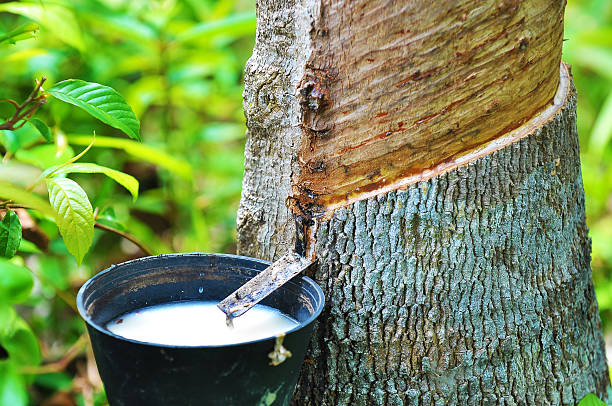
The main producing states of Rubber in Nigeria are Edo, Delta, Ondo, Ogun, Abia, Anambra, Akwa Ibom, Cross River, Rivers, Ebonyi, and Bayelsa States.
16. SESAME SEED
Sesame seeds, often referred to as “benne seeds,” are tiny powerhouses of nutrition and economic potential in Nigeria. These tiny seeds have become increasingly important in global trade and are a source of income and employment for many Nigerian farmers. In this article, we’ll dive into the world of sesame seed farming in Nigeria, exploring its economic significance, role in global trade, and the methods involved in growing, harvesting, and processing these valuable seeds.

The Economic Significance of Sesame Seeds
Global Demand
Sesame seeds are in high demand worldwide, primarily due to their use in cooking, baking, and the production of sesame oil.

Export Opportunities
Nigeria is a major exporter of sesame seeds, contributing significantly to the country’s foreign exchange earnings.
Sesame Seed Cultivation in Nigeria
Cultivation Methods
Sesame seed cultivation in Nigeria typically involves the following steps:
- Land Preparation: Well-drained soils with good organic matter content are ideal for sesame seed cultivation. Farmers prepare the land by plowing and planting sesame seeds in rows.
- Sowing: Sesame seeds are sown directly in the field. Proper spacing between rows and plants is essential for healthy growth.
- Irrigation: An adequate water supply is crucial, especially during the dry season when rainfall is scarce.
- Pest Control: Sesame plants can be susceptible to pests and diseases, necessitating pest management practices to protect the crop.
Harvesting and Processing
Sesame seeds are typically ready for harvest when the plants have matured, and the seed pods have turned brown. Harvesting involves carefully cutting the seed pods and collecting the seeds. After harvesting, the seeds are cleaned, dried, and processed.
Sesame Seeds in Global Trade
Export Markets
Income Generation
Sesame seed farming provides income opportunities for Nigerian farmers, particularly in regions with suitable climatic conditions.
Challenges and Sustainability
While sesame seed farming offers economic benefits, it also faces challenges:
- Quality Control: Ensuring consistent quality of sesame seeds is essential for international market access.
- Post-Harvest Losses: Proper storage facilities and preservation techniques are necessary to prevent post-harvest losses.
- Market Access: Improving market access and infrastructure for sesame seed products is vital for the industry’s growth.

Sesame seed farming in Nigeria is not just about tiny seeds; it’s about prosperity, global trade, and economic growth. As Nigeria continues to address the challenges and harness the economic potential of sesame seeds, these tiny powerhouses remain a symbol of resilience and progress in the nation. Sesame seeds, deeply rooted in Nigeria’s agricultural landscape, embody the country’s commitment to achieving economic prosperity through sustainable and innovative farming practices.
The major producing areas in order of priority are Kano, Nasarawa, Jigawa, and Benue States. Other important areas of production are found in Yobe, Kano, Katsina, Kogi, Gombe, Kwara, Niger, Bauchi and Plateau States.
17. SUGAR CANE
Sugar cane, the source of sweetness in many Nigerian delicacies and beverages, is not just a tasty treat but also a valuable crop that contributes significantly to the country’s economy. Its cultivation supports livelihoods, fosters agribusiness opportunities, and satisfies the nation’s sweet tooth. In this article, we’ll delve into the world of sugar cane farming in Nigeria, exploring its economic significance, role in sugar production, and the methods involved in growing, harvesting, and processing this versatile crop.
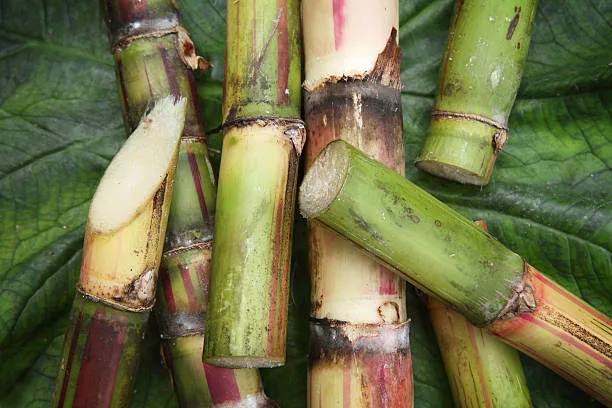
The Economic Significance of Sugar Cane
Sugar Production
Sugar cane is a primary source of sugar production in Nigeria. The sugar industry plays a crucial role in the country’s economy, providing jobs and contributing to GDP.
Agribusiness Opportunities
Sugar cane farming supports various agribusiness ventures, including processing, packaging, and marketing of sugar and related products.
Sugar Cane Cultivation in Nigeria
Cultivation Methods
Sugar cane cultivation in Nigeria typically involves the following steps:
- Land Preparation: Well-drained soils with good organic matter content are ideal for sugar cane cultivation. Farmers prepare the land by plowing and planting sugar cane stalks or setts.
- Planting: Sugar cane is propagated through stalks or setts, which are planted directly in the field. Proper spacing between rows and plants is essential for healthy growth.
- Irrigation: Adequate water supply is crucial for sugar cane growth, especially during dry periods.
- Weeding and Pest Control: Regular weeding and pest management practices are essential to ensure optimal sugar cane growth.
Harvesting and Processing
Sugar cane is typically ready for harvest when it has reached full maturity, which is determined by the size and sugar content of the cane. Harvesting involves cutting the sugar cane stalks, which are then transported to sugar mills for processing.

Sugar Cane and Sugar Production
Sugar Extraction
Sugar cane is processed in sugar mills to extract sugar juice. The juice is then processed further to obtain sugar crystals.
By-Products
The sugar cane industry also produces by-products, such as molasses and bagasse, which have various industrial and agricultural uses.
Challenges and Sustainability
While sugar cane farming offers economic benefits, it also faces challenges:
- Pest and Disease Management: Sugar cane crops can be susceptible to pests and diseases, which can impact yields.
- Environmental Concerns: Sustainable sugar cane farming practices, including waste management and water use efficiency, are vital for environmental sustainability.
- Market Access: Improving market access and infrastructure for sugar and related products is essential for the industry’s growth.
Sugar cane farming in Nigeria is not just about sweetness; it’s about prosperity, agribusiness, and economic growth. As Nigeria continues to address the challenges and harness the economic potential of sugar cane, this versatile crop remains a symbol of resilience and progress in the nation. Sugar cane, deeply rooted in Nigeria’s agricultural landscape, embodies the country’s commitment to achieving economic prosperity through sustainable and innovative farming practices.
Some of the states where sugar cane can be produced in Nigeria include Sokoto, Taraba, Niger, Kogi, Kwara and most northern states.
18. PEPPER
Pepper, the fiery and flavorful spice, is a staple in Nigerian cuisine, adding a burst of taste and aroma to countless dishes. Beyond its culinary uses, pepper farming plays a significant role in the country’s agriculture and economy. In this article, we’ll explore the world of pepper cultivation in Nigeria, highlighting its culinary importance, economic significance, and the methods involved in growing, harvesting, and processing this fiery crop.

The Culinary Importance of Pepper
Flavor Enhancer
Pepper is a key ingredient in Nigerian dishes, enhancing flavors and adding depth to soups, stews, and various traditional meals.
Culinary Diversity
Nigerian cuisine boasts a wide variety of pepper types, from mild bell peppers to scorching hot Scotch bonnet peppers, offering diverse culinary experiences.
Pepper Cultivation in Nigeria
Cultivation Methods
Pepper cultivation in Nigeria typically involves the following steps:
- Land Preparation: Well-drained soils with good organic matter content are ideal for pepper cultivation. Farmers prepare the land by clearing and planting pepper seeds or seedlings.
- Planting: Pepper can be propagated through seeds or transplanting seedlings. Adequate spacing between rows and plants is essential for healthy growth.
- Irrigation: Adequate water supply is crucial for pepper growth, especially during dry periods.
- Weeding and Pest Control: Regular weeding and pest management practices are essential to ensure optimal pepper growth.
Harvesting and Processing
Pepper is typically ready for harvest when the fruits have reached their full size and color. Harvesting involves carefully picking the pepper fruits, which can then be processed or sold fresh in the market.
Economic Significance
Pepper farming plays a significant role in Nigeria’s economy:
- Income Generation: Pepper farming provides income opportunities for Nigerian farmers, particularly in regions with suitable climatic conditions.
- Export Potential: Nigeria exports pepper to international markets, contributing to foreign exchange earnings.
- Local Market Demand: Pepper remains in high demand in local markets due to its culinary importance.
Challenges and Sustainability
While pepper farming offers economic benefits, it also faces challenges:
- Pest and Disease Management: Pepper crops can be susceptible to pests and diseases, which can impact yields.
- Climate Sensitivity: Changing weather patterns can affect pepper production, necessitating adaptation strategies.
- Post-Harvest Losses: Proper storage facilities and preservation techniques are essential to prevent post-harvest losses.
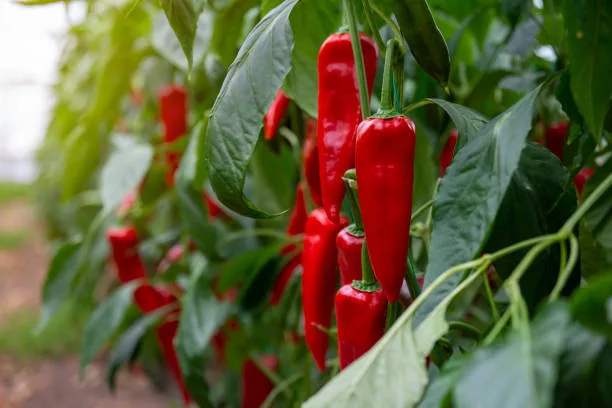
Pepper farming in Nigeria is not just about spiciness; it’s about flavor, culture, and economic growth. As Nigeria continues to address the challenges and harness the economic potential of pepper, this fiery spice remains a symbol of resilience and progress in the nation. Pepper, deeply ingrained in Nigeria’s culinary heritage, embodies the country’s commitment to achieving economic prosperity through sustainable and flavorful farming practices.
Some of the states where Pepper can be produced in Nigeria include, Kano, Jigawa, Katsina, Sokoto, Plateau and Bauchi states
19. TIMBER
Timber, the sturdy and versatile natural resource, has been a cornerstone of construction and development in Nigeria for generations. Beyond its use in buildings, timber plays a pivotal role in the environment, providing a sustainable source of wood and mitigating climate change. In this article, we’ll delve into the world of timber cultivation in Nigeria, highlighting its importance in the construction industry, its environmental significance, and the methods involved in growing, harvesting, and processing this valuable resource.

Timber and the Construction Industry
Building Material
Timber is a fundamental building material in Nigeria, used in the construction of houses, furniture, bridges, and a wide range of infrastructure projects.
Economic Impact
The timber industry contributes to the country’s economy by providing jobs, supporting the construction sector, and generating income for timber farmers.
Timber Farming in Nigeria
Cultivation Methods
Timber farming in Nigeria typically involves the following steps:
- Land Preparation: Well-managed forest or plantation areas are ideal for timber cultivation. Sustainable forestry practices are crucial to maintaining healthy timber stands.
- Tree Planting: Timber trees are propagated through seeds or seedlings. Adequate spacing and proper tree management are essential for timber growth.
- Thinning: As timber trees grow, thinning may be necessary to promote the healthy development of individual trees.
- Harvesting: Timber trees are typically ready for harvest when they have reached maturity, which can take several years. Harvesting involves cutting down mature trees for processing.
Sustainable Forestry
Timber farming practices in Nigeria are increasingly focused on sustainability and reforestation to ensure a continuous supply of timber resources.
Timber and Environmental Significance
Carbon Sequestration
Timber forests act as carbon sinks, helping to mitigate climate change by absorbing and storing carbon dioxide from the atmosphere.
Biodiversity
Timber forests support diverse ecosystems, providing habitats for wildlife and contributing to biodiversity conservation.
Challenges and Sustainability
While timber farming offers economic benefits, it also faces challenges:
- Illegal Logging: Unregulated and illegal logging practices can lead to deforestation and environmental degradation.
- Forest Management: Proper forest management and sustainable harvesting practices are essential for long-term timber sustainability.
- Market Access: Improving market access and infrastructure for timber products is crucial for the industry’s growth.
Timber farming in Nigeria is not just about construction; it’s about sustainability, environmental stewardship, and economic growth. As Nigeria continues to address the challenges and harness the economic potential of timber, this valuable natural resource remains a symbol of resilience and progress in the nation. Timber, deeply rooted in Nigeria’s history and environment, embodies the country’s commitment to building a sustainable future through responsible forestry practices.
Ondo, Cross River, Ogun, Edo, Delta Ekiti, Osun, and Oyo States of Nigeria are the largest producers.
20. TOMATO
Tomatoes, the vibrant and versatile crop, are a staple in Nigerian cuisine, adding color, flavor, and nutrition to a variety of dishes. Beyond their culinary uses, tomato farming plays a significant role in the country’s agriculture and economy, offering income opportunities and promoting food security. In this article, we’ll dive into the world of tomato cultivation in Nigeria, exploring its culinary importance, economic significance, and the methods involved in growing, harvesting, and processing this essential crop.
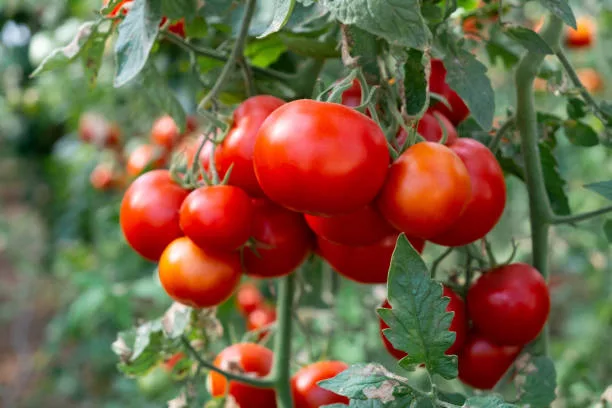
The Culinary Importance of Tomatoes
Flavor Enhancer
Tomatoes are a key ingredient in Nigerian dishes, enhancing flavors and adding depth to soups, stews, sauces, and salads.
Nutritional Value
Tomatoes are rich in essential nutrients, including vitamins, minerals, and antioxidants, making them a wholesome addition to meals.
Tomato Cultivation in Nigeria
Cultivation Methods
Tomato cultivation in Nigeria typically involves the following steps:
- Land Preparation: Well-drained soils with good organic matter content are ideal for tomato cultivation. Farmers prepare the land by plowing and planting tomato seeds or seedlings.
- Planting: Tomato can be propagated through seeds or transplanting seedlings. Proper spacing between rows and plants is essential for healthy growth.
- Irrigation: An adequate water supply is crucial for tomato growth, especially during dry periods.
- Weeding and Pest Control: Regular weeding and pest management practices are essential to ensure optimal tomato growth.
Harvesting and Processing
Tomatoes are typically ready for harvest when they have reached their full size, color, and ripeness. Harvesting involves carefully picking the tomatoes, which can then be processed into various tomato products or sold fresh in the market.
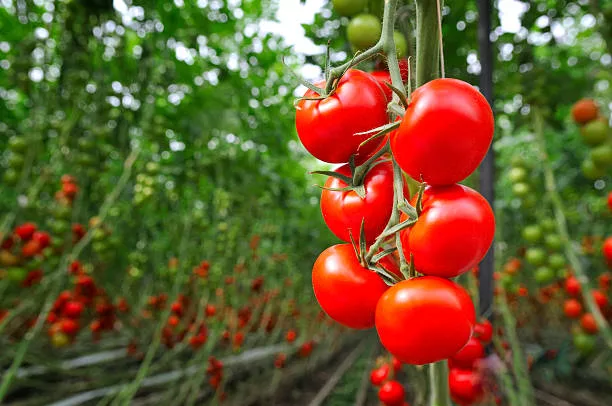
Economic Significance
Tomato farming plays a significant role in Nigeria’s economy:
- Income Generation: Tomato farming provides income opportunities for Nigerian farmers, particularly in regions with suitable climatic conditions.
- Agro-Processing: The tomato value chain includes processing, packaging, and marketing of tomato products, creating opportunities for employment and income generation.
- Food Security: Tomatoes serve as a source of affordable nutrition, promoting food security and reducing dependency on imports.
Challenges and Sustainability
While tomato farming offers economic benefits, it also faces challenges:
- Pest and Disease Management: Tomato crops can be susceptible to pests and diseases, which can impact yields.
- Post-Harvest Losses: Proper storage facilities and preservation techniques are essential to prevent post-harvest losses.
- Market Access: Improving market access and infrastructure for tomato products is vital for the industry’s growth.
Tomato farming in Nigeria is not just about vibrant vegetables; it’s about flavor, nutrition, and economic growth. As Nigeria continues to address the challenges and harness the economic potential of tomatoes, this essential crop remains a symbol of resilience and progress in the nation. Tomatoes, deeply ingrained in Nigeria’s culinary heritage, embody the country’s commitment to achieving economic prosperity and food security through sustainable and flavorful farming practices.
While tomatoes are cultivated in most states in the country, Jigawa, Katsina, Zamfara, Sokoto, Kaduna, Bauchi, Gombe, Taraba, and Kano lead the pack in the commercial cultivation of the crop.
21. SORGHUM
Sorghum, the resilient and nutritious grain, has been a staple in Nigerian diets for generations. Beyond its importance as a source of nutrition, sorghum farming plays a pivotal role in the country’s agriculture and economy. It thrives in diverse agroecological zones, making it a versatile and drought-resistant crop. In this article, we’ll delve into the world of sorghum cultivation in Nigeria, highlighting its nutritional importance, economic significance, and the methods involved in growing, harvesting, and processing this valuable grain.

The Nutritional Importance of Sorghum
Dietary Staple
Sorghum is a dietary staple in Nigeria, providing essential carbohydrates and nutrients to the population.
Gluten-Free
Sorghum is naturally gluten-free, making it suitable for individuals with gluten sensitivities or celiac disease.
Sorghum Cultivation in Nigeria
Cultivation Methods
Sorghum cultivation in Nigeria typically involves the following steps:
- Land Preparation: Well-drained soils with good organic matter content are ideal for sorghum cultivation. Farmers prepare the land by plowing and planting sorghum seeds.
- Planting: Sorghum is propagated through seeds, which are sown directly in the field. Proper spacing between rows and plants is essential for optimal growth.
- Rainfed Agriculture: Sorghum is well-suited for rainfed agriculture and is often grown in regions with irregular rainfall.
- Weeding and Pest Control: Regular weeding and pest management practices are essential to ensure healthy sorghum growth.
Harvesting and Processing
Sorghum is typically ready for harvest when the grains have reached their full size and maturity. Harvesting involves cutting the sorghum stalks, which are then processed to remove the grains.
Economic Significance
Sorghum farming plays a significant role in Nigeria’s economy:
- Food Security: Sorghum is a key source of food security, providing a stable source of nutrition in regions prone to drought.
- Income Generation: Sorghum farming provides income opportunities for Nigerian farmers, particularly in arid and semi-arid areas.
- Industrial Uses: Sorghum is used in the production of various food products, including sorghum flour, sorghum-based beverages, and animal feed.
Challenges and Sustainability
While sorghum cultivation offers economic benefits, it also faces challenges:
- Climate Variability: Climate change and variability can impact sorghum production, necessitating adaptation strategies.
- Pest and Disease Management: Sorghum crops are susceptible to pests and diseases, which can lead to reduced yields.
- Market Access: Improving market access and infrastructure for sorghum products is crucial for the industry’s growth.
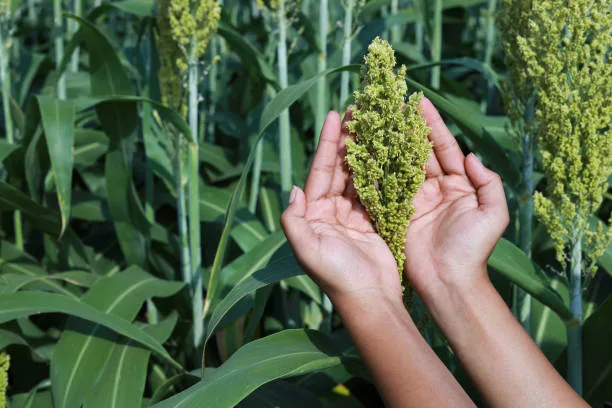
Sorghum farming in Nigeria is not just about grains; it’s about nutrition, resilience, and economic growth. As Nigeria continues to address the challenges and harness the economic potential of sorghum, this versatile and drought-resistant grain remains a symbol of resilience and progress in the nation. Sorghum, deeply ingrained in Nigeria’s agricultural heritage, embodies the country’s commitment to achieving food security and economic prosperity through sustainable farming practices.
Some of the states where Sorghum can be produced in Nigeria include Amara, Niger, Plateau, Katsina, Kaduna, Benue, Kano, Bauchi, and Borno state
22. WHEAT
Wheat, the versatile and essential grain, holds a special place in Nigeria’s quest for food security and economic growth. While it may not be as commonly grown as some other crops, its significance in addressing the nation’s nutritional needs and providing economic opportunities cannot be overstated. In this article, we’ll dive into the world of wheat cultivation in Nigeria, exploring its role in food security, economic significance, and the methods involved in growing, harvesting, and processing this valuable crop.
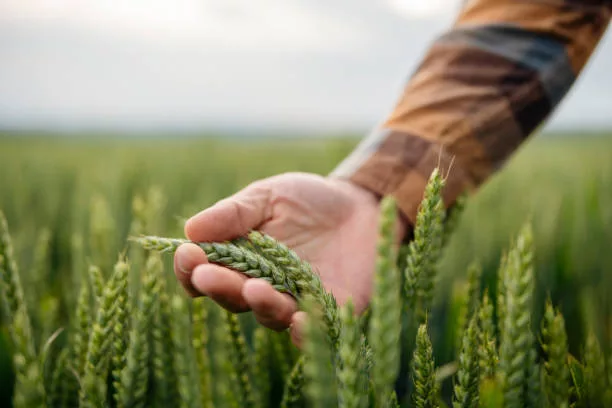
Wheat and Food Security
Staple Food
Wheat is a staple food worldwide, and its cultivation in Nigeria contributes to the country’s food security by diversifying grain sources.
Dietary Importance
Wheat provides essential carbohydrates and nutrients, making it a valuable component of Nigerian diets.
Wheat Cultivation in Nigeria
Cultivation Methods
Wheat cultivation in Nigeria typically involves the following steps:
- Land Preparation: Well-drained soils with good organic matter content are ideal for wheat cultivation. Farmers prepare the land by plowing and planting wheat seeds.
- Planting: Wheat is propagated through seeds, which are sown directly in the field. Proper spacing between rows and plants is essential for optimal growth.
- Irrigation: An adequate water supply is crucial for wheat growth, especially during dry periods.
- Weeding and Pest Control: Regular weeding and pest management practices are essential to ensure healthy wheat growth.
Harvesting and Processing
Wheat is typically ready for harvest when the grains have matured and turned golden. Harvesting involves cutting the wheat stalks, which are then processed to remove the grains.
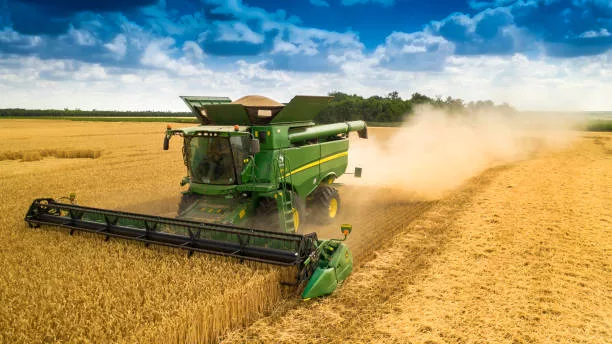
Economic Significance
Wheat farming plays a significant role in Nigeria’s economy:
- Income Generation: Wheat farming provides income opportunities for Nigerian farmers, particularly in regions with suitable climatic conditions.
- Food Processing: Wheat is a key ingredient in the production of various food products, including bread, pasta, and pastries, contributing to the food industry.
- Import Substitution: Increasing domestic wheat production can help reduce the reliance on wheat imports, saving foreign exchange.
Challenges and Sustainability
While wheat cultivation offers economic benefits, it also faces challenges:
- Climate Sensitivity: Wheat is sensitive to temperature and rainfall variations, making it susceptible to climate change impacts.
- Pest and Disease Management: Wheat crops can be susceptible to pests and diseases, which can lead to reduced yields.
- Market Access: Developing infrastructure for wheat processing and storage is crucial for the industry’s growth.

Wheat farming in Nigeria is not just about grains; it’s about food security, nutrition, and economic growth. As Nigeria continues to address the challenges and harness the economic potential of wheat, this versatile and essential grain remains a symbol of resilience and progress in the nation. Wheat, deeply ingrained in Nigeria’s quest for food security, embodies the country’s commitment to nurturing prosperity through sustainable and innovative farming practices.
Nigeria’s northern states of Borno, Yobe, Jigawa, Kano, Zamfara, Katsina, Adamawa, Sokoto, and Kebbi, are major wheat-growing areas
23. HIDES AND SKIN
Hides and skins, often hidden treasures in Nigeria’s agricultural landscape, are valuable resources that have played a significant role in the country’s economy for generations. These raw materials are essential to the leather industry and provide income opportunities for many Nigerians. In this article, we’ll unveil the world of hides and skins in Nigeria, exploring their role in the leather industry, economic significance, processing methods, and their impact on local livelihoods.

Hides and Skins in the Leather Industry
Leather Production
Hides and skins serve as the primary raw materials for the leather industry in Nigeria, contributing to the production of leather products, including shoes, bags, belts, and upholstery.
Economic Impact
The leather industry generates income and employment opportunities, particularly in leather processing and craftwork, supporting local economies.
Hides and Skins Processing
Collection
Hides and skins are collected from various sources, including cattle, goats, sheep, and other livestock. They are usually obtained through slaughterhouses and local markets.
Preservation
To prevent spoilage, collected hides and skins are preserved through methods such as salting or drying, ensuring they remain suitable for processing.
Tanning
Tanning is a crucial step in the hides and skin processing chain. It involves treating the raw materials with chemicals to transform them into durable leather.
Leather Craftsmanship
Processed leather is used by local craftsmen and artisans to create a wide range of leather products, contributing to the local economy.
Economic Significance
Hides and skins play a significant role in Nigeria’s economy:
- Income Generation: The hides and skins trade provides income opportunities for local traders, processors, and craftsmen.
- Export Potential: Nigeria exports leather and leather products to international markets, contributing to foreign exchange earnings.
- Local Livelihoods: The leather industry supports the livelihoods of many Nigerians, particularly in rural areas.
Challenges and Sustainability
While hides and skins offer economic benefits, they also face challenges:
- Quality Control: Ensuring consistent quality of hides and skins is essential for the leather industry’s competitiveness in international markets.
- Infrastructure: Improving processing facilities and access to modern tanning techniques is vital for industry growth.
- Environmental Concerns: Sustainable hides and skin processing practices, including waste management, are essential for environmental sustainability.
Hides and skins in Nigeria are not just raw materials; they are hidden treasures that sustain local livelihoods and contribute to the country’s economy. As Nigeria continues to address the challenges and harness the economic potential of hides and skins, these valuable resources remain symbols of resilience and progress in the nation. Hides and skins, deeply rooted in Nigeria’s cultural and economic heritage, embody the country’s commitment to nurturing prosperity through the utilization of its rich agricultural resources.
Kano, Adamawa, Bauchi, Gombe, Niger, Kaduna, Zamfara, Borno, Taraba, Jigawa, Kebbi and also Oyo Kwara, Nassarawa to lesser extents.
24. COCOA
Cocoa, the cherished and flavorful crop, is not only a delight to chocolate lovers but also a source of economic growth in Nigeria. The country’s cocoa industry has a rich history and plays a pivotal role in providing livelihoods and contributing to the nation’s economy. In this article, we’ll delve into the world of cocoa cultivation in Nigeria, highlighting its role in the chocolate industry, its economic significance, and the methods involved in growing, harvesting, and processing this valuable crop.
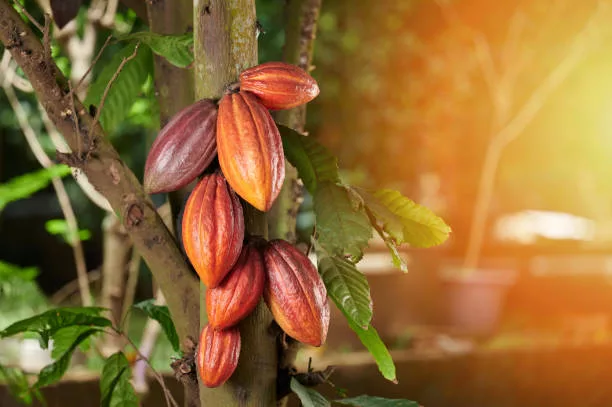
Cocoa and the Chocolate Industry
Chocolate Production
Cocoa is the primary ingredient in chocolate production, making it a critical component of the global chocolate industry.
Export Opportunities
Nigeria exports cocoa beans to international markets, contributing to foreign exchange earnings and supporting the country’s economy.
Cocoa Cultivation in Nigeria
Cultivation Methods
Cocoa cultivation in Nigeria typically involves the following steps:
- Land Preparation: Well-drained soils with good organic matter content are ideal for cocoa cultivation. Farmers prepare the land by clearing and planting cocoa seeds or seedlings.
- Shade Management: Cocoa trees require shade for optimal growth. Shade trees are often planted to provide the necessary canopy.
- Harvesting: Cocoa pods are typically ready for harvest when they have turned from green to yellow or orange. Harvesting involves carefully cutting the pods and extracting the cocoa beans.
Fermentation and Drying
After harvesting, cocoa beans are fermented and dried to develop their flavor profile and reduce moisture content.
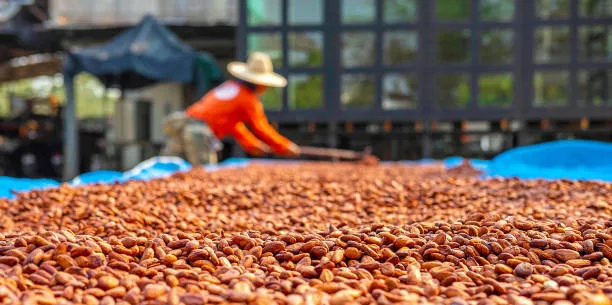
Economic Significance
Cocoa farming plays a significant role in Nigeria’s economy:
- Income Generation: Cocoa farming provides income opportunities for Nigerian farmers, particularly in regions with suitable climatic conditions.
- Export Revenue: Nigeria’s cocoa exports contribute to foreign exchange earnings and support the country’s balance of payments.
- Employment Opportunities: The cocoa value chain includes processing, marketing, and trade, creating jobs and income for many Nigerians.
Challenges and Sustainability
While cocoa cultivation offers economic benefits, it also faces challenges:
- Disease Management: Cocoa trees are susceptible to diseases, which can lead to reduced yields.
- Sustainability: Sustainable cocoa farming practices, including reforestation and biodiversity conservation, are essential for the industry’s long-term viability.
- Market Access: Improving market access and infrastructure for cocoa products is vital for the industry’s growth.
Cocoa farming in Nigeria is not just about beans; it’s about flavor, culture, and economic growth. As Nigeria continues to address the challenges and harness the economic potential of cocoa, this cherished and flavorful crop remains a symbol of resilience and progress in the nation. Cocoa, deeply ingrained in Nigeria’s agricultural heritage, embodies the country’s commitment to achieving economic prosperity through sustainable and delicious farming practices.
The highest-producing states in the country are Ondo, Osun, Cross River, Ekiti, Oyo, and Edo.
25. PLANTAIN
Plantain, the versatile and beloved crop, is not just a staple in Nigerian cuisine but also a source of economic prosperity for many. Whether fried, boiled, or roasted, plantains are a culinary delight, and their cultivation forms the backbone of many Nigerian farms. In this article, we’ll dive into the world of plantain farming in Nigeria, exploring its culinary importance, economic significance, and the methods involved in growing, harvesting, and processing this valuable crop.
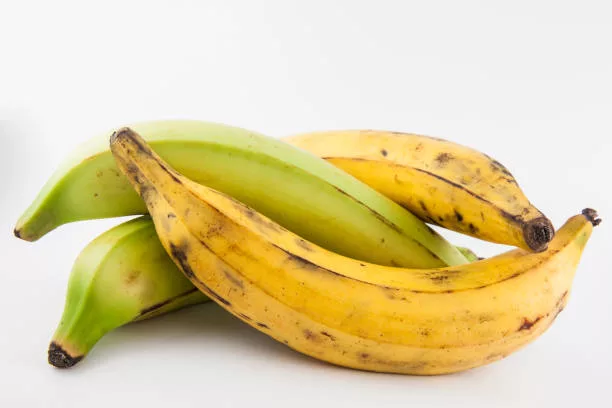
The Culinary Importance of Plantains
Dietary Staple
Plantains are a dietary staple in Nigeria, providing essential carbohydrates and nutrients to the population.
Culinary Diversity
Plantains are used in various dishes, from the popular fried plantains (dodo) to plantain porridge (iyan elepo) and plantain chips.
Plantain Cultivation in Nigeria
Cultivation Methods
Plantain cultivation in Nigeria typically involves the following steps:
- Land Preparation: Well-drained soils with good organic matter content are ideal for plantain cultivation. Farmers prepare the land by clearing and planting plantain suckers.
- Planting: Plantains are propagated through suckers, which are planted directly in the field. Proper spacing between plants is essential for healthy growth.
- Irrigation: Adequate water supply is crucial for plantain growth, especially during dry periods.
- Weeding and Pest Control: Regular weeding and pest management practices are essential to ensure optimal plantain growth.
Harvesting and Processing
Plantains are typically ready for harvest when the fruits have reached their full size and have turned from green to yellow or black, depending on the desired ripeness. Harvesting involves cutting the bunches of plantains, which can be processed into various culinary delights or sold fresh in the market.
Economic Significance
Plantain farming plays a significant role in Nigeria’s economy:
- Income Generation: Plantain farming provides income opportunities for Nigerian farmers, particularly in regions with suitable climatic conditions.
- Local Market Demand: Plantains are in high demand in local markets due to their culinary importance.
- Export Opportunities: Nigeria exports plantains and plantain products to international markets, contributing to foreign exchange earnings.
Challenges and Sustainability
While plantain farming offers economic benefits, it also faces challenges:
- Disease Management: Plantains can be susceptible to diseases, such as the banana bunchy top virus, which can impact yields.
- Post-Harvest Losses: Proper storage facilities and preservation techniques are essential to prevent post-harvest losses.
- Market Access: Improving market access and infrastructure for plantain products is crucial for the industry’s growth.
Plantain farming in Nigeria is not just about delicious dishes; it’s about prosperity, culture, and economic growth. As Nigeria continues to address the challenges and harness the economic potential of plantains, this versatile and beloved crop remains a symbol of resilience and progress in the nation. Plantains, deeply ingrained in Nigeria’s culinary heritage, embody the country’s commitment to achieving economic prosperity through sustainable and flavorful farming practices.
Plantain is produced in the following states in Nigeria Lagos, Ondo, Ogun, Oyo, Oshun, Ekiti, Edo, Delta, Cross River, Akwa Ibom, Imo, Bayelsa, Abia, and Ebonyi.
Conclusion
Nigeria’s agricultural resources are as diverse as its people and culture. The nation’s various states play critical roles in supplying a wide range of crops, livestock, and other agricultural products that not only meet domestic demand but also contribute significantly to the country’s economy. With continued investment in agriculture and modern farming practices, Nigeria’s agricultural sector holds the potential for further growth and development, making it a key player on the global agricultural stage.
READ, ALSO >>>>> What Are The Top 20 Innovative Agriculture Business Ideas You Need to Explore Today?

